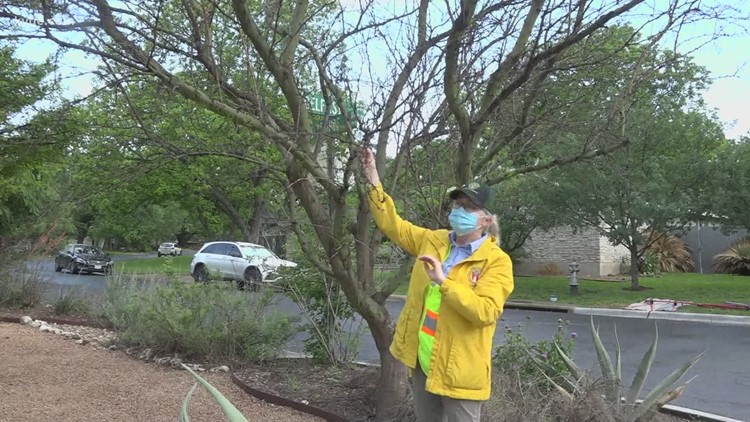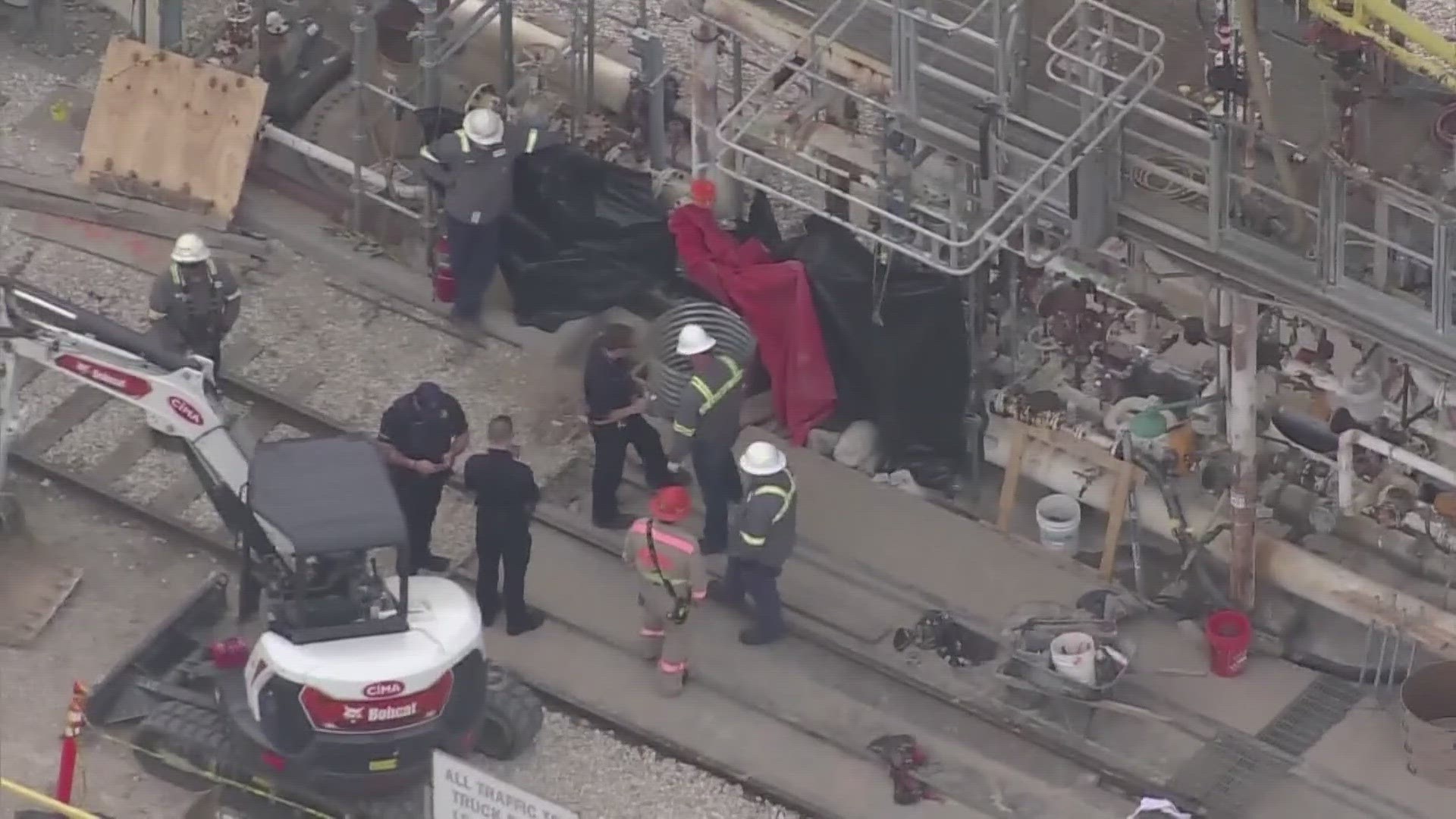Warm weather is here, flowers are in full bloom and our lawns are green again.
Even so, the February freeze continues to haunt some Houston-area homeowners with potentially dangerous zombie trees.
Experts say the troubled trees often look fine outside but are slowly decaying inside can pose a problem to people or property.
Some can be saved, but others will need to be removed.
How to spot a zombie tree
Dead wood, decay or fungus: Dead trees and large, dead branches can fall at any time.
Cracks: Deep splits through the bark that extend into the wood of the tree’s trunk or limbs.
Peeling bark: Look for patches of bark that are peeling off.
Heavy Canopies: Excessively thick branches and foliage catch more wind during stormy weather. This increases the risk of branch breakage and uprooting.
Discolored foliage or leaves with dying tips: Extreme weather like the arctic front that hit Texas in February and heavy flooding can cause leaves to wilt or die-back early. Prematurely falling leaves on a mature tree are another sign.
Root problems: Check if the soil near the base of the tree is cracked or lifting on one side. If construction has taken place nearby, closely examine that area of the tree. Nearby construction may sever large roots or compact the soil, reducing root growth. Without a strong root system, trees are more likely to be uprooted or blown over in storms.
Poor tree architecture: Excessive leaning of the tree, or branches growing out of proportion with the rest of the tree crown. Odd growth patterns may indicate general weakness or structural imbalance.
Insect infestations such as bark beetles.
How to save a zombie tree
With a little tender loving care, some dying trees can be saved from the world of the living dead.
“I’ve seen trees in decline rebound from infestations,” Professor Jason Grabosky with Lawnstarter.com says. “A lot depends on the species of tree and how much damage has been done.”
Call the experts: First, have your trees checked by a licensed tree expert or certified arborist before it’s too late. Homeowners should check for TCIA accreditation, ISA Certification and proof of insurance.
Re-setting or staking trees smaller trees that are unstable or leaning.
Cable weak branches or V-shaped limbs.
Brace split trunks that need extra support.
Proper pruning: Thinning the tree canopy allows wind to blow through it instead of against it as a sail.
Fertilizing: A slow-release fertilizer replaces lost nutrients and may also help improve resistance to damage from disease, insects and extreme weather.
Plant new trees: Native trees typically survive storms more than exotic trees. Trees grouped in sets of five or more fare intense storms better. Add 2 to 3 inches of organic mulch to new trees, keeping mulch away from the trunk.
Removing zombie trees
Again, leave this up to the experts. It could save you money and headaches in the long run.
“Climbing up on ladders with power tools can be dangerous if you don’t know what you’re doing,” Grabosky says. “Hire a professional to remove your dying tree. And depending on where the tree is located, you might want to leave it where it is."
Not all dead trees that aren't near homes or roads need to be removed. Instead, let nature take its course.
“A biologically dead tree is just fine,” Grabosky says. “We need these habitats for a healthy ecosystem. Remember, just because it’s dead doesn’t mean it’s dangerous.”
This isn't the first time the Houston area has dealt with zombie trees. It happened after Hurricane Harvey too.
Source: Lawnstarter.com contributed to this report



